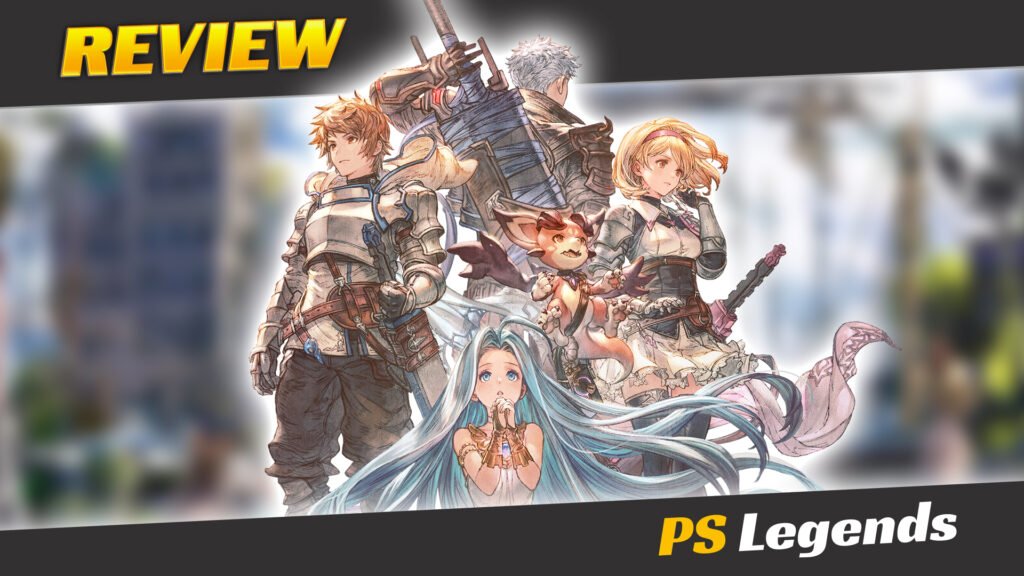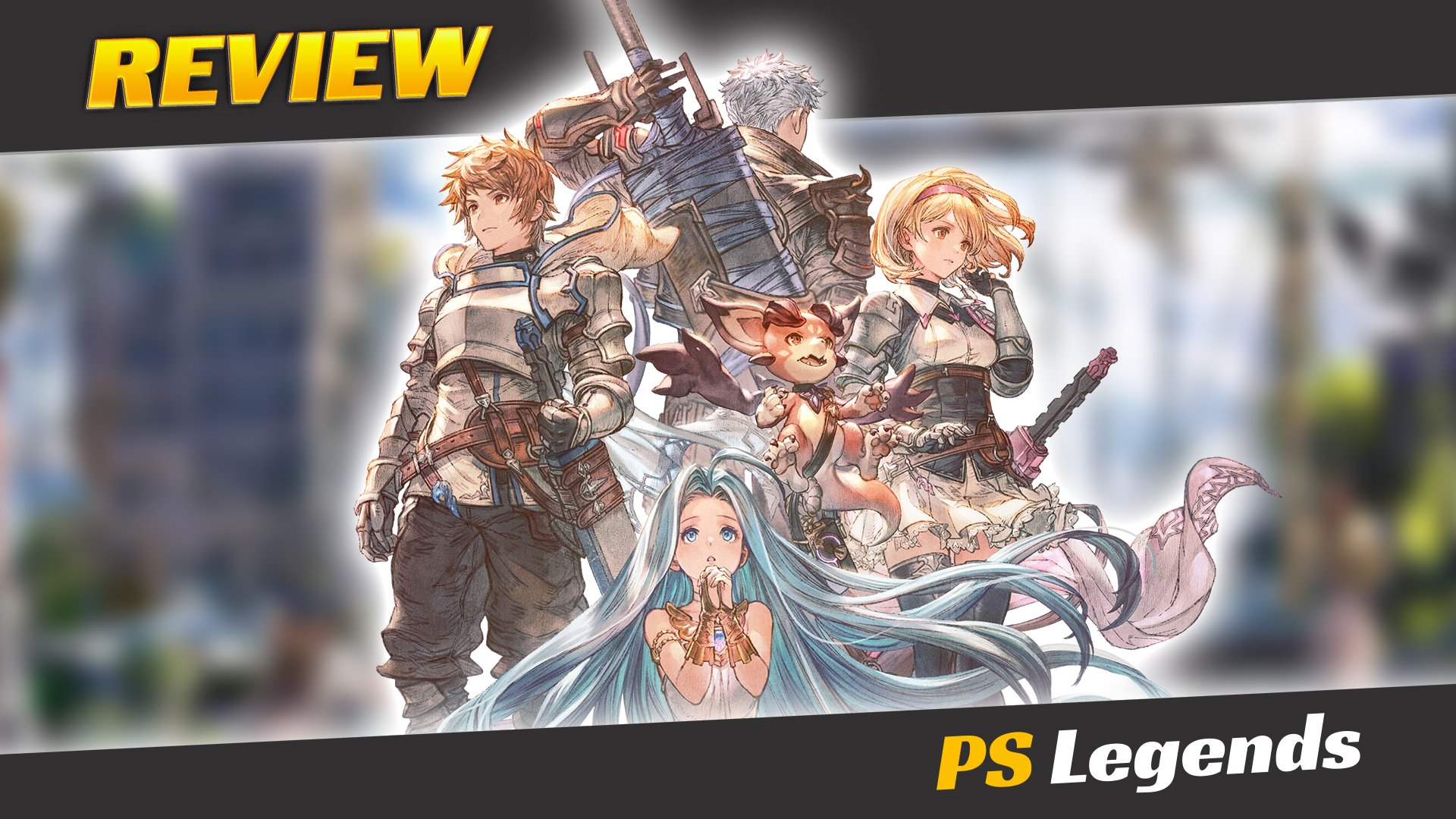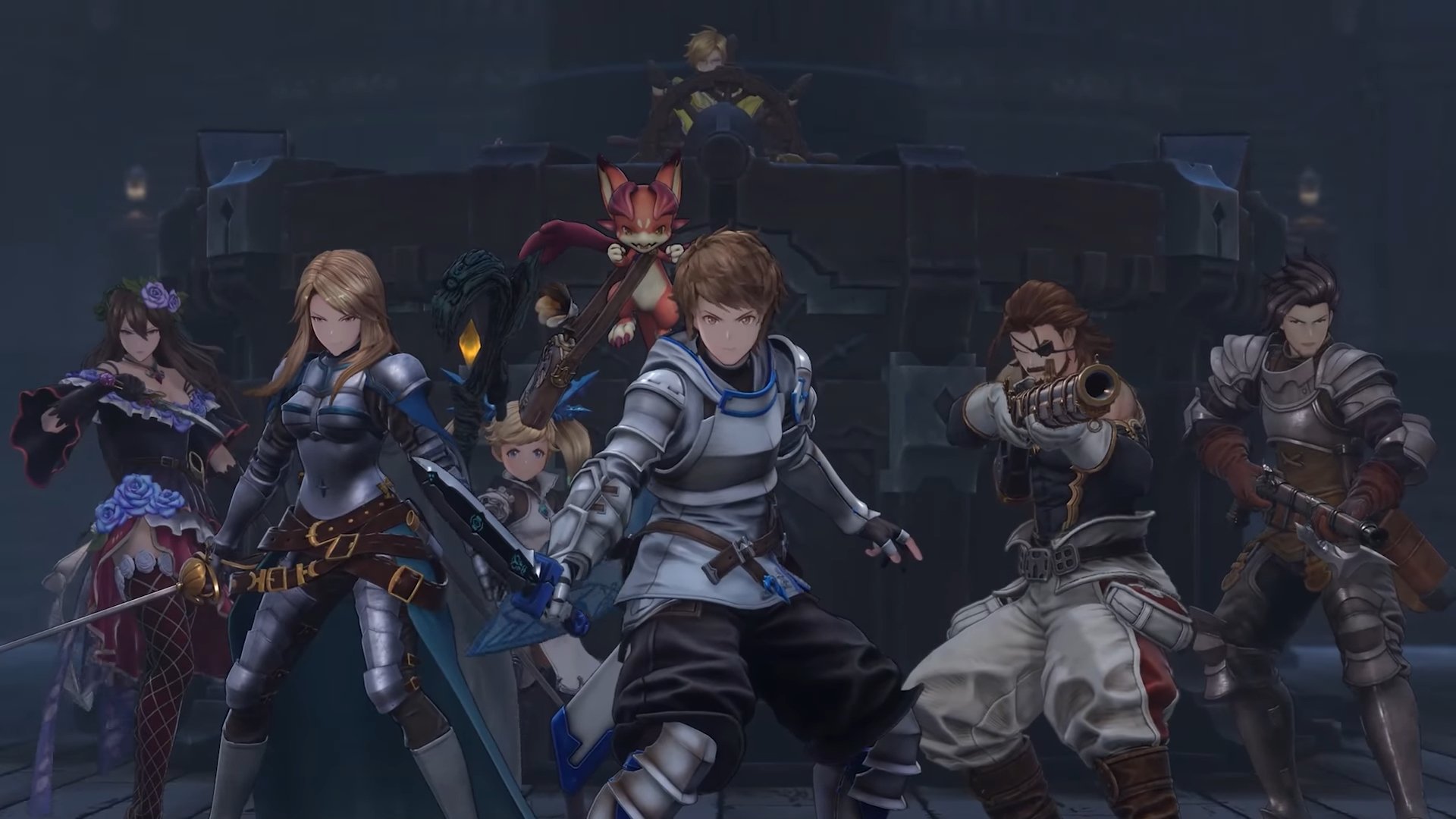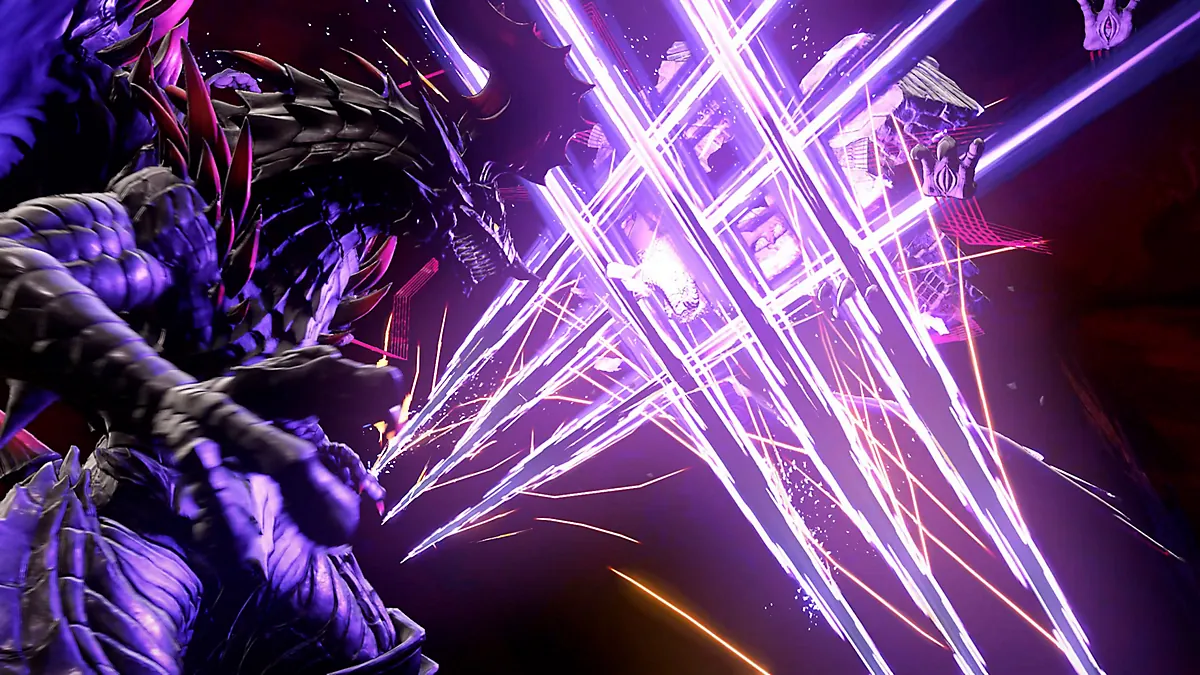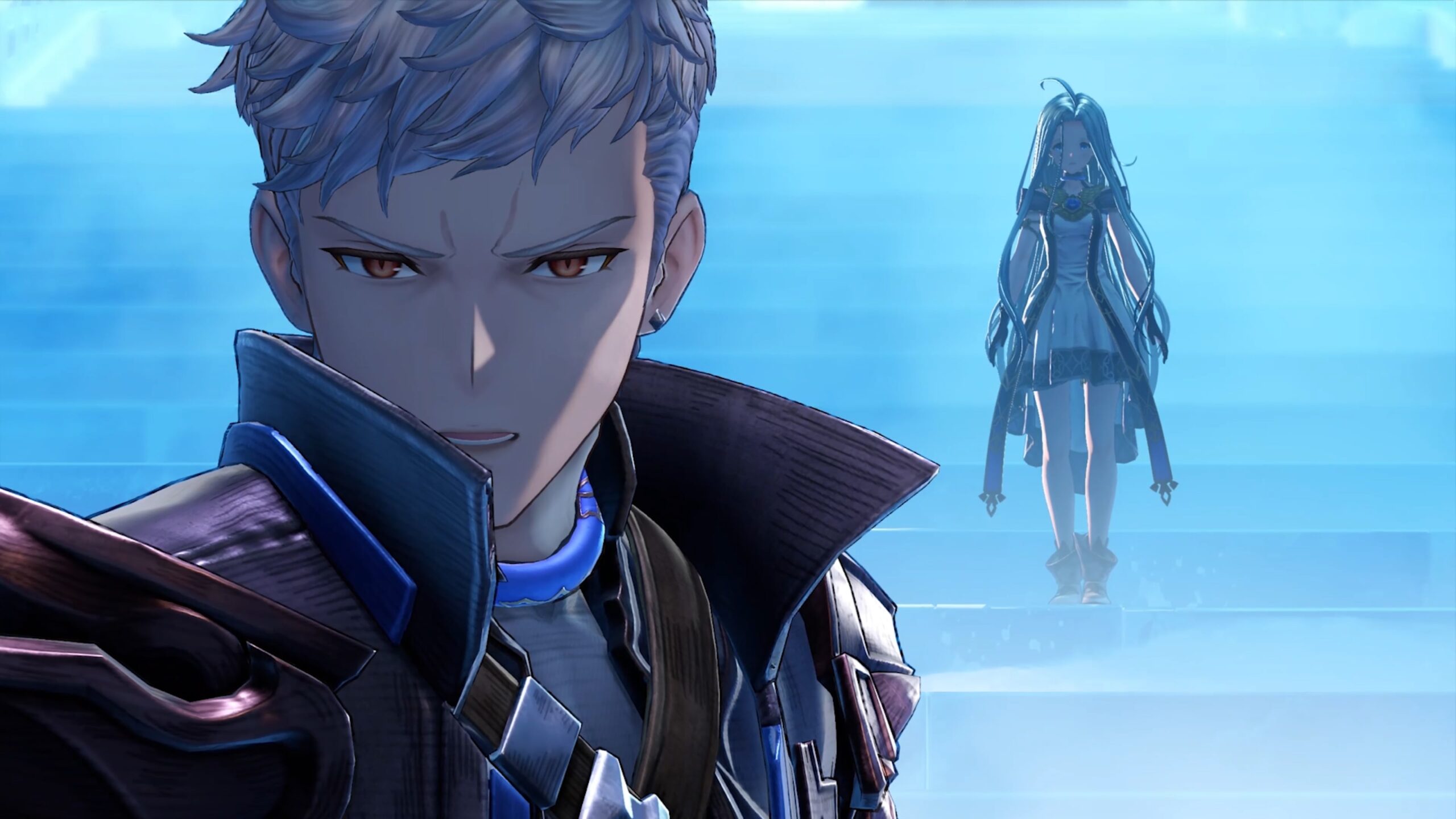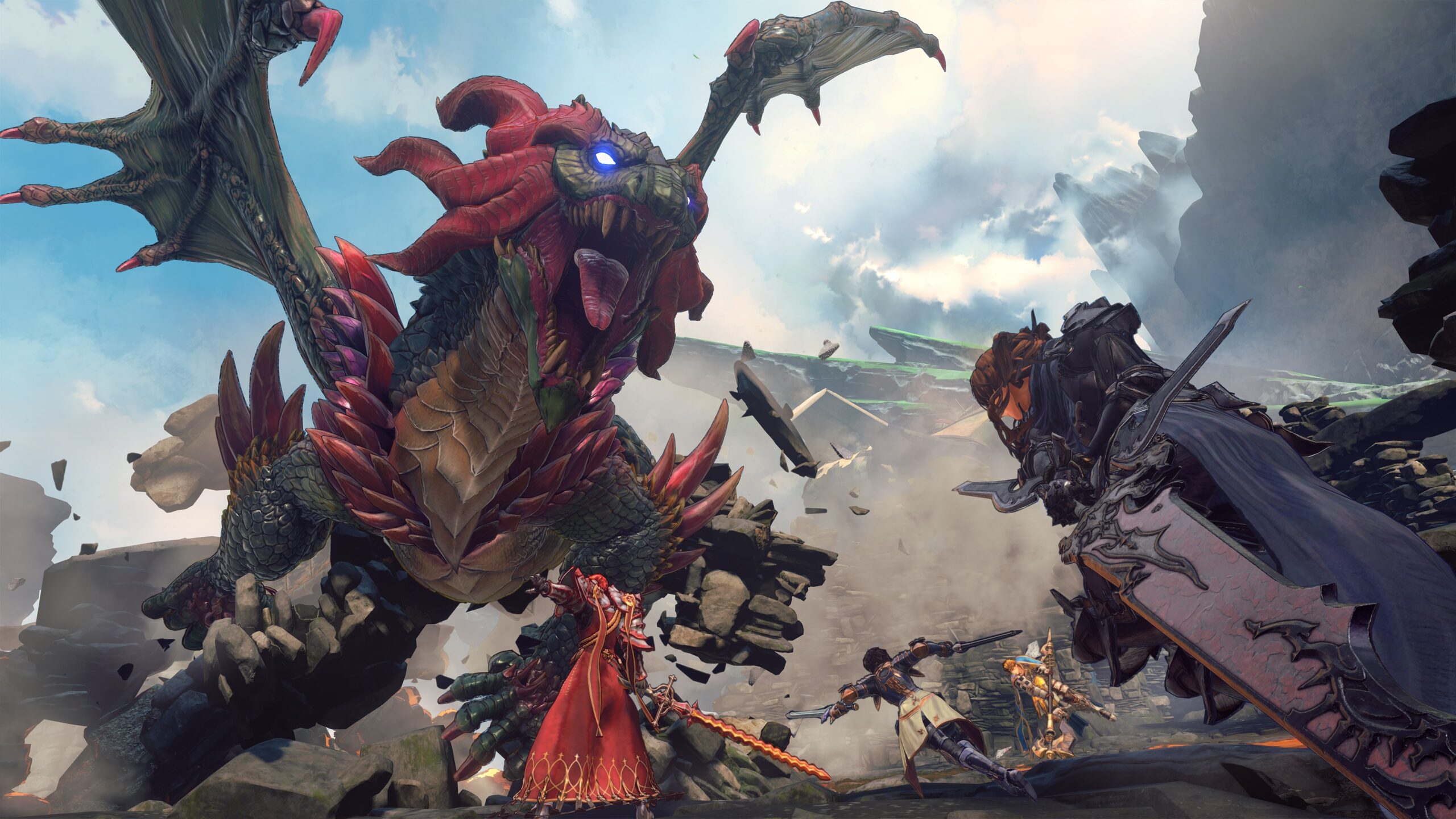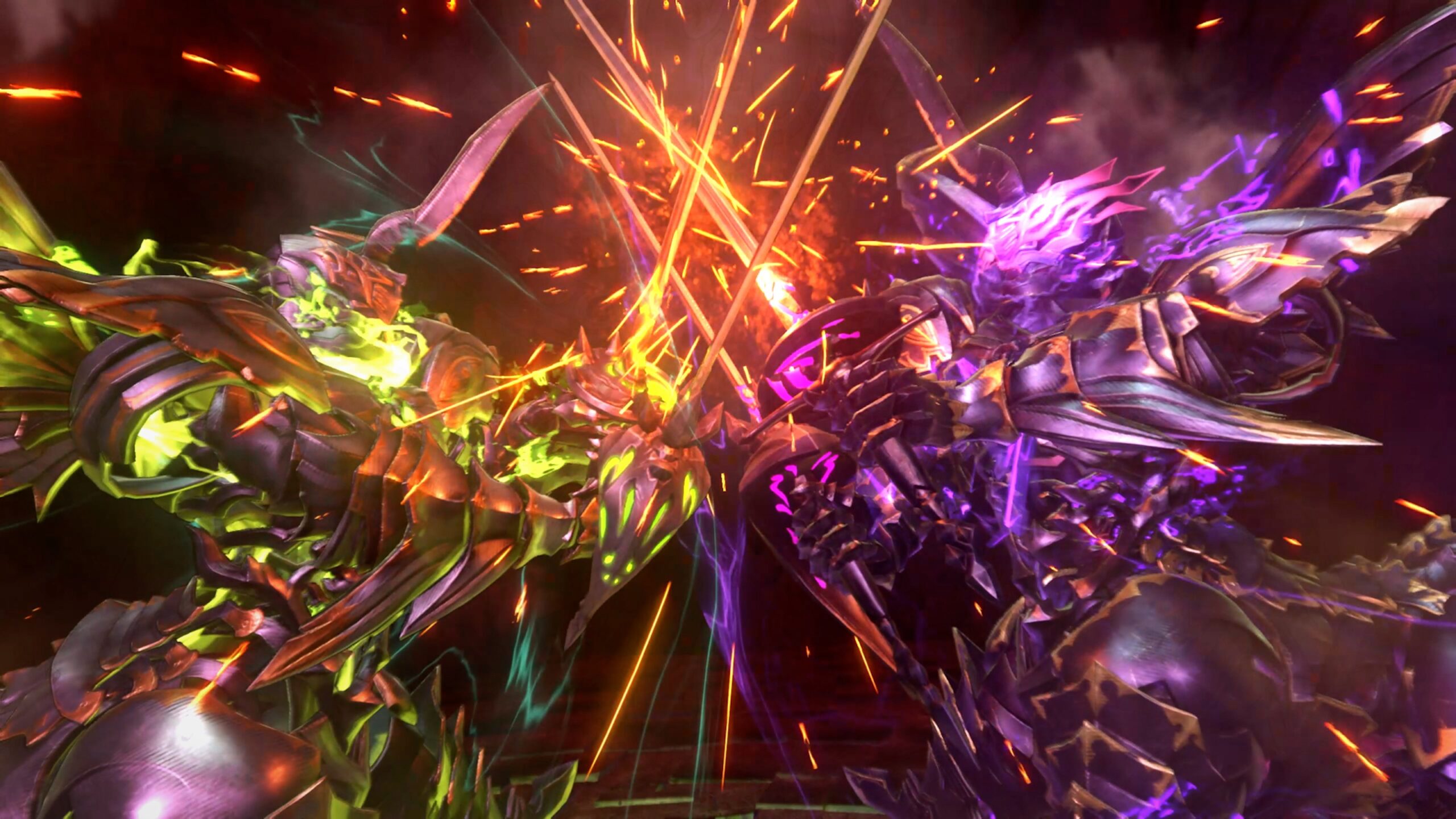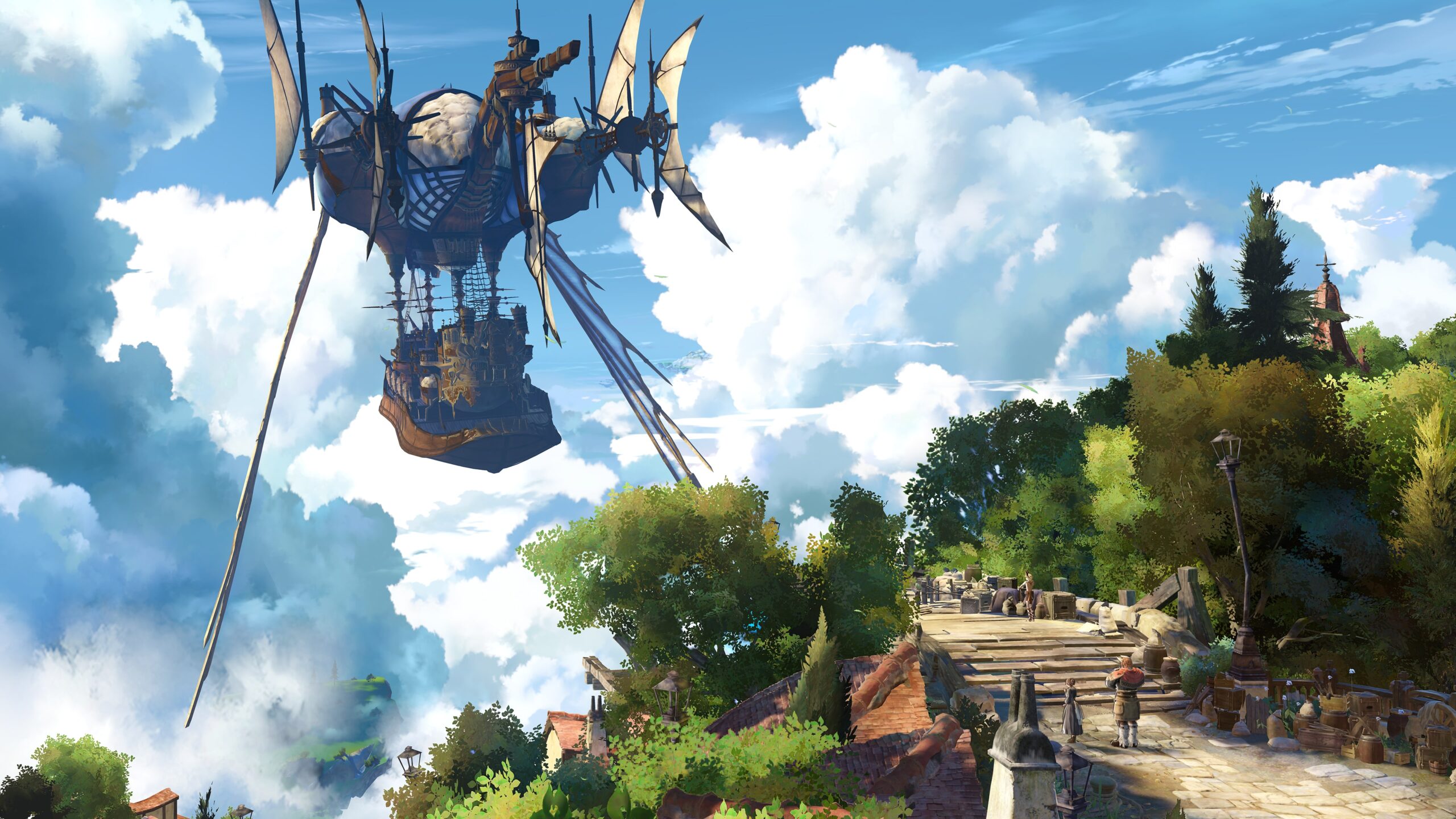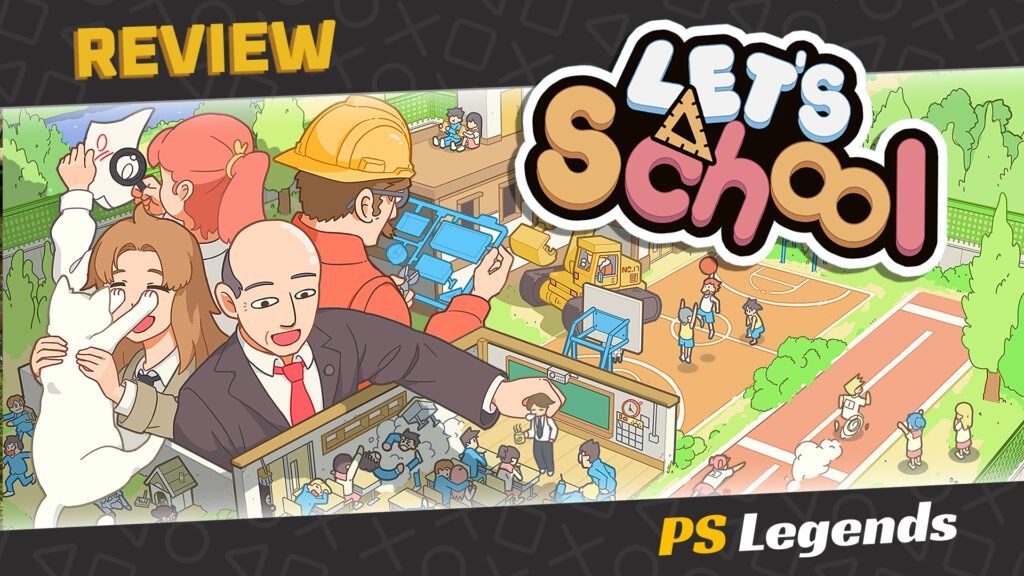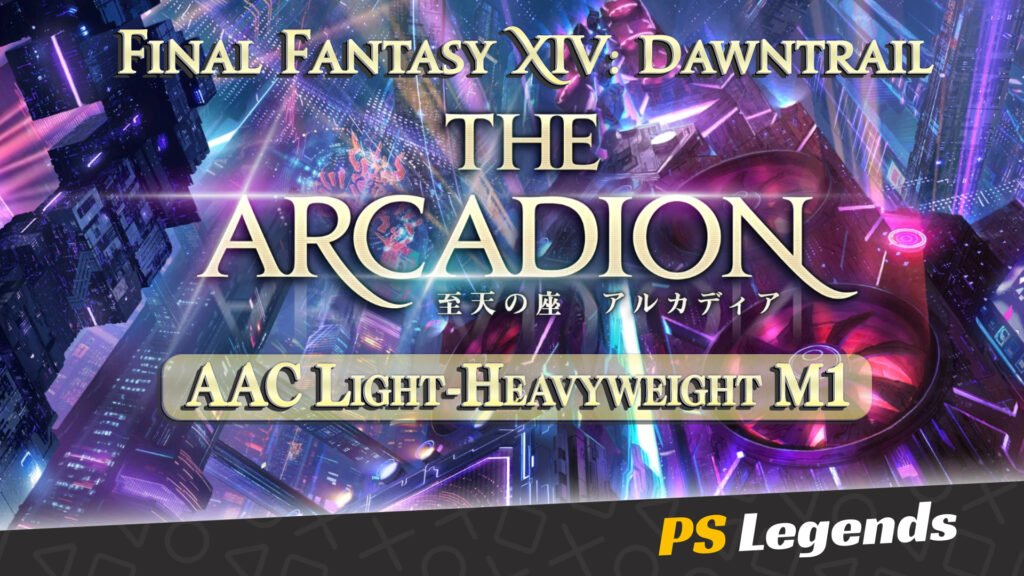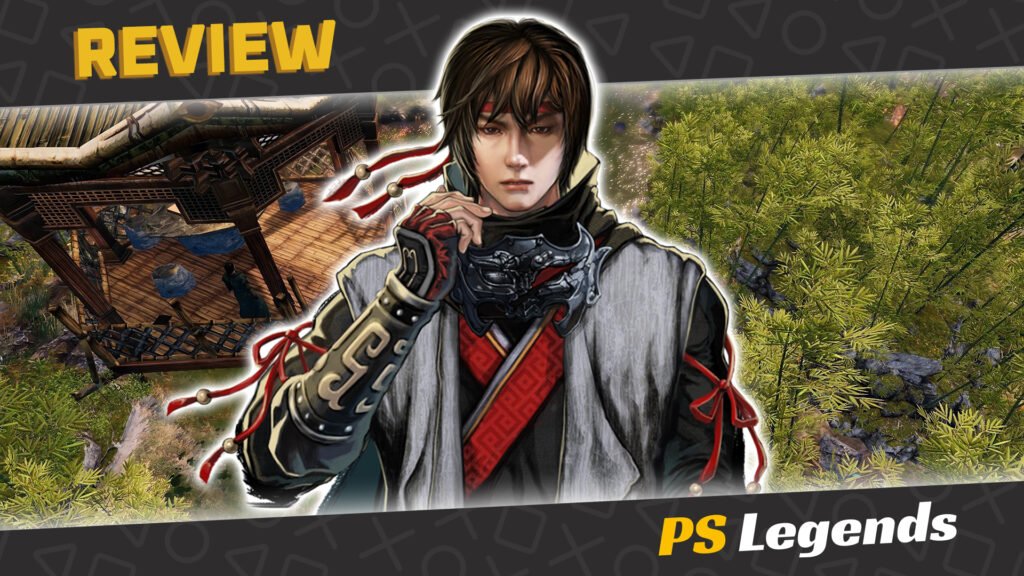Despite being something of a JRPG aficionado, I’m rather going in blind with Granblue Fantasy: Relink. Not because I’ve been avoiding the previous games in the series, but because they’re either from unrelated genres or released for devices which didn’t match my preference. While the original Granblue Fantasy is a popular MMO action-RPG, you’ll only find it on iOS, Android and a browser.
Time to see if this highly anticipated PlayStation follow-up is deserving of its lengthy development and hefty level of hype. Granblue Fantasy: Relink is an action role-playing game by Cygames as part of the ongoing Granblue Fantasy franchise. The game was released for both PlayStation 4 and PlayStation 5 on February 1st, 2024.

On This Page
Introduction
Granblue Fantasy: Relink really had quite the long and troubled development cycle. Announced way back in August 2016, to be developed by a collaboration between Platinum Games and Cygames. Some of the game’s staff include iconic composers Nobuo Uematsu and Tsutomu Narita, and famed artist Hideo Minaba.
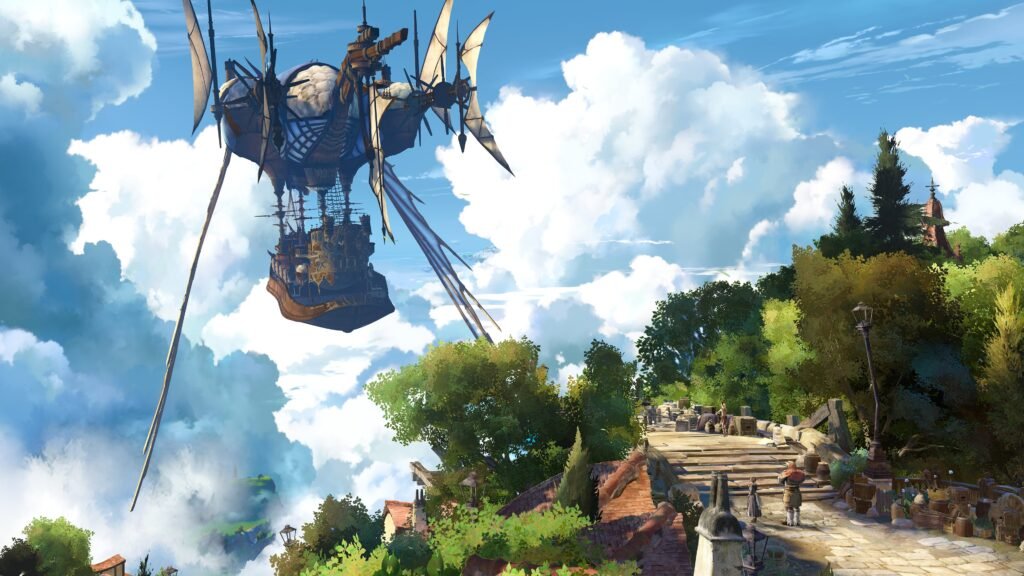
In September 2016, the game was announced for PlayStation 4 at Sony’s Tokyo Game Show press conference, to hopefully be released in 2018. Yeah, it didn’t happen. By February 2019, Platinum Games was no longer involved in the project, leaving Cygames to handle the rest of development alone.
After not releasing in 2018 as planned, the game was scheduled to be released in 2022, but was once again delayed to 2023, then was finally delayed to February 2024. A playable demo was released on January 11th, 2024 to give its incredibly patient players the chance to see if the staggering wait had paid off, and first-play feedback was surprisingly good… very good.

Story
Granblue Fantasy takes place in the Sky Realm, a world where countless islands float in the great blue expanse. Pretty much continuing on from where the previous games left off, the player resumes control of either Gran or Djeeta, depending on your gender preference, more commonly known as ‘Captain’ to the Skyfaring crew of the airship Grandcypher.
The original game would see the captain cheat death by merging life-forces with a mysterious girl named Lyria who is on the run from the oppressive empire which previously sought her magical powers for their own agenda. With the Captain now bound as Lyria’s protector and literal soul-mate, they are joined by the lively young dragon, Vyrn, Lyria’s devoted original bodyguard, Katalina, and the Grandcypher’s owner and pilot, Rackam.

In the Zegagrande Skydom, islands are guarded by powerful creatures known as Primals which Lyria can form allegiant pacts with, however, this is not always a flawless transaction. When the Grandcypher is attacked by a swarm of wyverns, Lyria summons the powerful dragon Bahamut to assist them, but Bahamut has difficulty differentiating between friend and foe, attacking both the wyverns and the Grandcypher, causing the ship to make an emergency landing in a strange new land where new Primals await.
Other characters, such as sorceresses Rosetta and Io, plus many more, will also contribute to your ever-growing crew. Together, your colourful cast of misfits seek to follow in the footsteps of the captain’s father by finding Estalucia, a legendary island believed to lie beyond the end of the skies, and the ultimate goal of the aggressively corrupt Church of Avia.
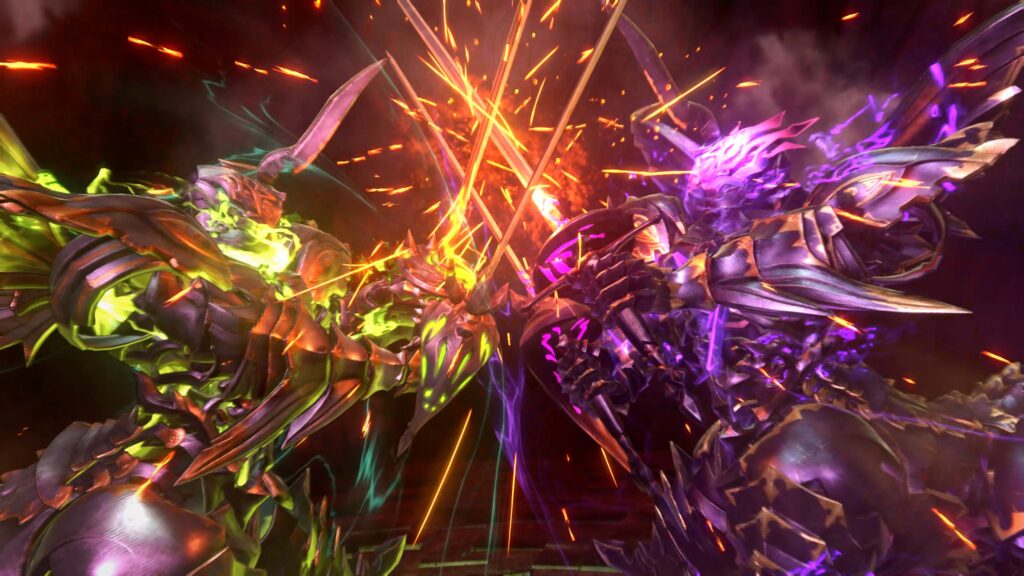
Gameplay
Being every bit a fast-flowing action-RPG means real-time combat, controlling one character in an active party of four. You’ll periodically unlock new allies to add to your diverse roster of potentially more than fifteen Skyfarers, each with their own unique weapons, skills, and combat styles. Your quartet will find ways to integrate their attacks with party-based mechanics such as Link Attacks and Chain Bursts to help you crush foes with epic spectacle. Additionally, assist modes can provide accessibility for gamers of all skill levels.
In battle, you play as a single character while the AI handles up to three of your party members, and each character comes with their own unique fighting style and ability loadout which can be upgraded via an especially long skill tree. One of Relink’s key selling points is its huge playable character roster. It’s quite diverse in terms of gameplay from character to character, with each Skyfarer having their own ideal strategies based on their damage output and speed.
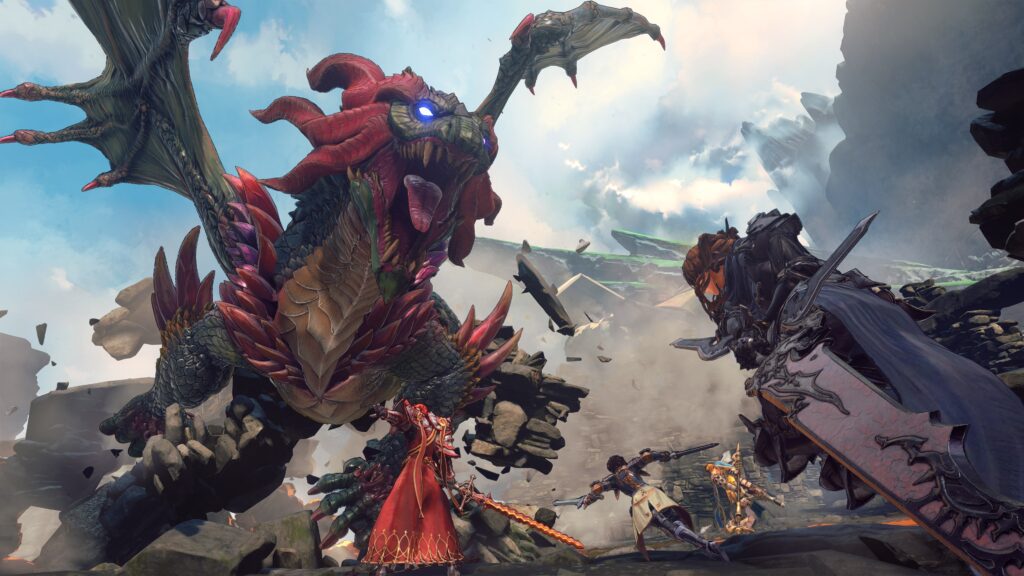
The captain, for example, is equipped with a short sword and a decent variety of abilities, making them the ideal starter character, but there are gun-toting ranged fighters, spell-casting magic users, and plenty of pretty warriors who lug impressively oversized weapons about. Taking them all for a spin, finding your favourites, and transforming them into high-level powerhouses is really Relink’s big end-game gimmick once you’ve finished the main story.
The hack-and-slash combat is accessible but also demands timely dodges and blocks, not unlike the systems that you’ll find in the Platinum Games’ most well-known releases, such as NieR Automata. However, what sets Relink apart is its reliance on standard RPG elements such as stat levelling and equipment upgrading, while battles are punctuated by character-specific combos and skills that operate using cooldowns.
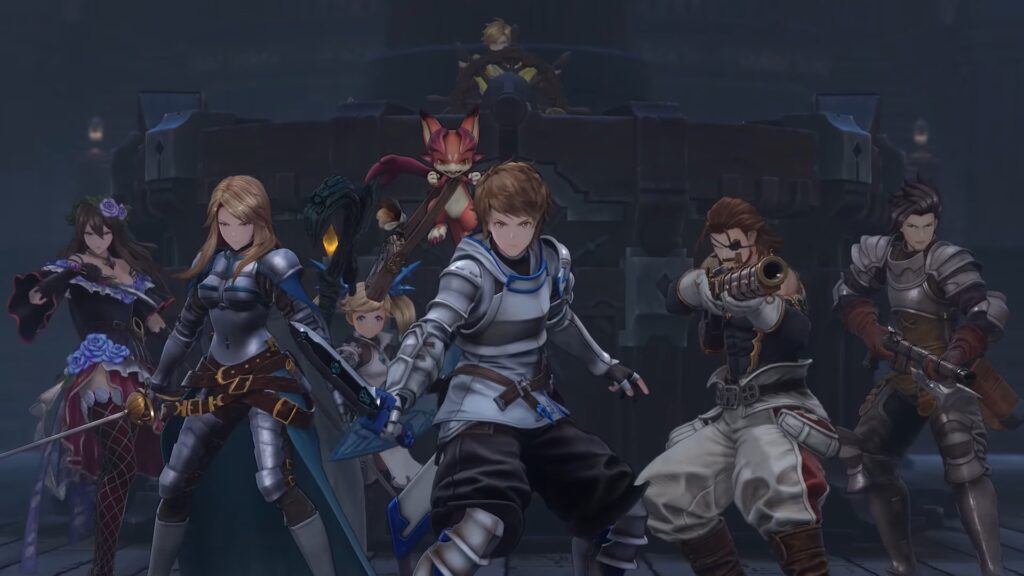
The game can be broken up into two parts: the single-player story campaign, and mission-based quests that can be tackled with either CPU allies or other online players. The latter is where you’ll likely make use of your expanding character roster, but you’ll need to complete the core campaign before you can tackle the vast majority of the game’s additional quests.

In a way, the single-player story acts as a sort of tutorial and introduction to Relink’s mechanics, but it’s far more than just that. This is a full-blown campaign made up of cutscenes, action-packed levels, and some impressive cinematic set pieces. It’s abundantly clear that a lot of effort has been poured into the title’s headline act. The base game adventure is a real thrill ride for most of its duration, as you battle colossal bosses and challenge some impressive platforming sections.
Partway through the campaign, you’re given the opportunity to unlock playable characters who aren’t part of your immediate crew, using Crewmate Cards. However, it’s important to note that these additional heroes have nothing to do with the main story, which focuses exclusively on the captain and their closest allies. As such, playing as unlocked characters who don’t appear in cutscenes can feel like an awkward continuity error sometimes.
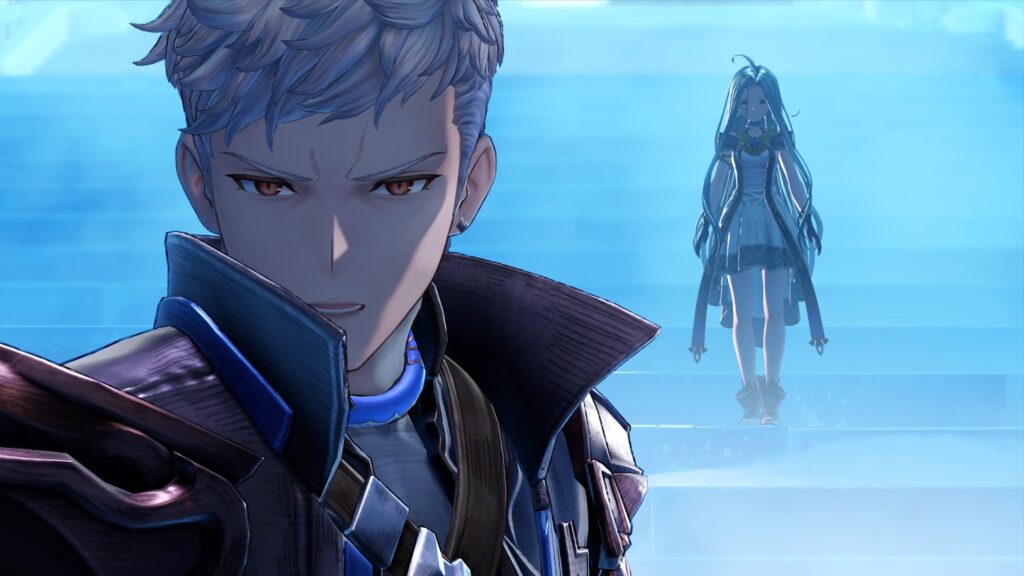
Fortunately, you’ll have a massive number of quests to undertake post-campaign. These missions come in many shapes and sizes; some task you with wiping out waves of monsters, some have you defend a location, and some pit you against especially dangerous bosses, though these quests don’t quite match up to the drama of story battles. The idea here is that you’ll grind objectives in order to level characters and collect materials which can be used to both forge and upgrade weapons.
Select a quest from the hub town, gather your CPU allies or find allies online, battle through the mission, and then head back to the hub so that you can upgrade your characters, ready to do it all over again. You can tackle quests solo or with the help of others for up to 4-player co-op and take down foes to score rare loot to further enhance your gear. More advanced players could take the time to assess the strengths and weaknesses of their selected party.
Teamwork is actively encouraged since even generic enemies require a barrage of blows to bring down. AI-assisted combat opens up mechanics which button mashers may normally overlook. Your allies trigger possibilities for higher-damage link-attacks and a wide range of healing spells, barriers, and buffs, so it does pay off to keep an eye on your teammates, but that is easier said than done mid-combat.

Graphics/Sound
Battles are flashy, magical spectacles commonly associated with the modern action-RPG genre. However, such spectacle can make it difficult to react to incoming attacks accordingly, yet outside of battle, such detail and vibrant colour is nothing but a compliment. Relink has gorgeous art direction. You can certainly tell that this was intended to be a PS4 release, but the game makes the effort to optimise what it’s got. HD visuals are maintained throughout, including a smooth 60 frames-per-second.
Relink’s got a fantastic orchestral soundtrack that’s often elevated by some very welcome electric guitars. However, I can’t help but notice that some of the tracks, particularly combat themes, sound alarmingly similar to some famous Final Fantasy favourites. You’ll also find a decent enough job done with the voice acting, at least in terms of acting quality from veteran voice actors, however the recording quality leaves a lot to be desired, with the epic amount of hiss present in the playback resulting in several characters sounding like they have heavy (and slightly insensitive) lisps.

Replayability
If you want to complete every mission in Relink, you’re looking to triple the initial 20 hour playtime. Mixing up your characters can alleviate some boredom and repetition as you put the hours into grinding levels since the toughest optional bosses can pose a serious challenge, but whether you’re with the CPU or other players, fatigue starts to take hold long before you’ve bested the lot, and this can make trophy hunting quite the chore.
Nevertheless, the Sky Realm is rich in lore and history. Browse Lyria’s journal at any point during the game to access a trove of writings on the world’s people, places, and more. In addition to the wealth of side quests available, Fate Episodes allow you to delve into the backstories of each member of your crew, as well as viewing scenes of their idle time, getting to know them a little better. You’ll unlock these scenes periodically over time, as your party’s levels increase.

Conclusion
PS5 JRPGs may be few and far between, yet Granblue Fantasy: Relink still manages to stand out as a respectable stab at the genre. Relink’s campaign may take just 20 hours to beat, but it’s a solid 20 hours of fast, uncomplicated fun. There are times when it feels very textbook Platinum Games, especially in regard to pacing and boss encounters that grow more and more ambitious as the story progresses.
The story campaign is excellent, but its relatively short length means that completionists will spend most of their time with the game’s optional quests, which rarely reach the same heights. Still, whether you’re playing alone or in co-op, there’s a fun combat system here if you don’t mind the simple mash and flash. On the flip side, spending hours playing through optional missions and spending in-game vouchers to unlock new characters can make the game feel less like a JRPG epic and more like an MMO or gacha game.
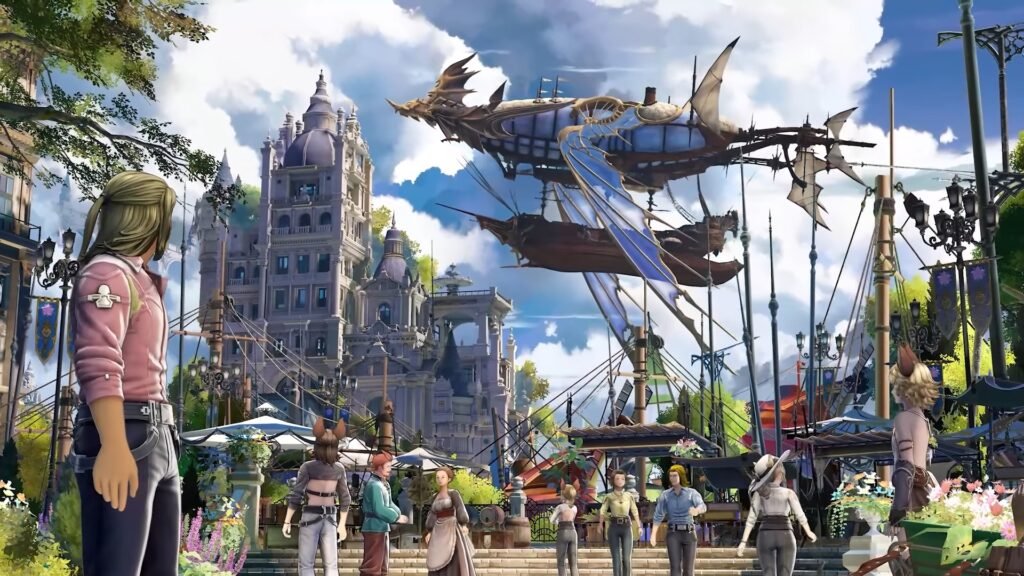
There is another issue worth talking about, and that’s Granblue Fantasy’s lack of identity. You see, the series exposes a staggering lack in originality. We already touched on the music which, while suitably epic, sounds a lot like remixed Final Fantasy VII tracks. Also borrowed from Final Fantasy are the summonable beasts; Bahamut and Leviathan are pretty much like-for-like copies. The pirate theme of a ragtag bunch of skilled misfits also feels very One Piece.
The hack and slash combat playing as a single character in a team of CPU warriors combined with a major lack of actual character development all round feels highly reminiscent of the Tales games from the last ten years, right down to the impersonal character interactions, absence of specific character arcs and absolutely no hint of romance with a cast that appears consistently asexual throughout. These are all components we’ve seen before.
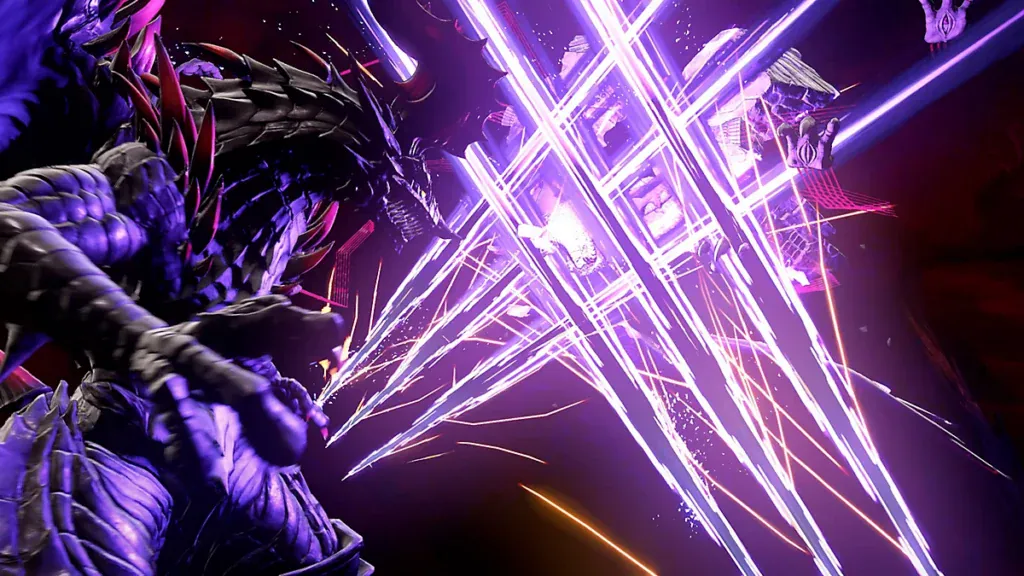
As hard as I’m being on the game, it’s important to remember that the bigger issues don’t really show until after you’ve finished the main campaign. This is simply because the main scenario is so streamlined. It may feel a bit short-lived, but that’s largely because the experience is an intense, zero-filler adventure and the optional content and side-quests really come afterwards. The slow start passes quickly, and everything ramps up and wraps up in an immensely satisfying manner, leaving what comes next up to the player. It’s a rewardingly customisable experience.
Joys
- Story escalates to impressive levels
- Fun, flashy combat
- Plenty to keep enthusiasts busy
Cons
- Very little character development
- A big grind required to master the post-game
- Relatively short main story
